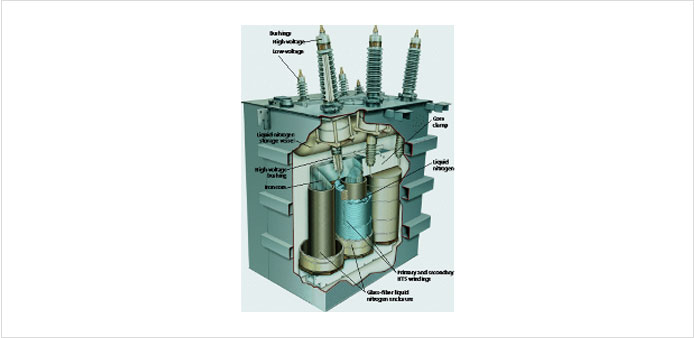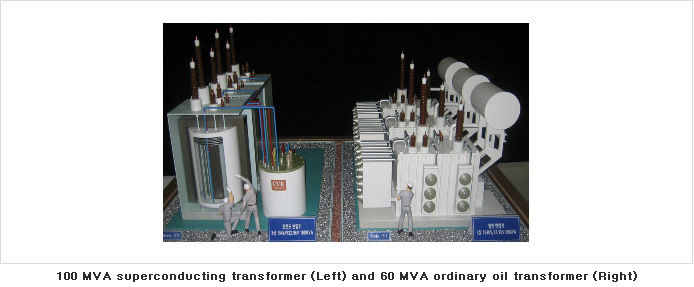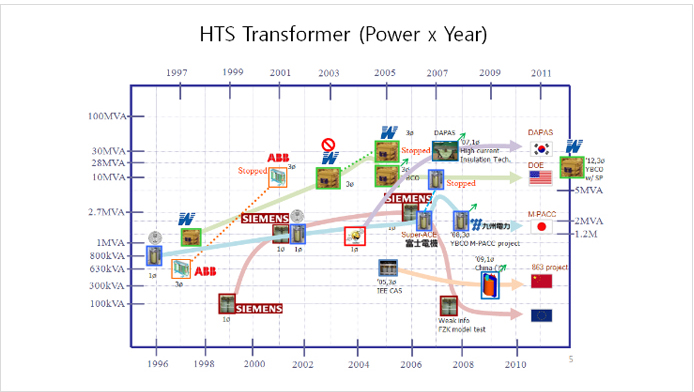
- >
- Superconductivity
- >
- Superconductivity Application Technologies
- >
- Supercoducting Transformer
Supercoducting Transformer
High temperature superconducting transformer is the transformer which is replaced by superconducting wire instead of copper wire of ordinary transformer. Superconducting windings are cooled with liquid nitrogen and installed in a non-conductive cryogenic containers for thermal insulation against room temperature.
The superconducting wire can flow 100 times more current than copper wire of the same unit area.
The superconducting transformers are compact, lightweight, high-capacity, and high efficiency and have environmentally friendly power conversion because the transformers do not use insulation oil.
Technology for high current and low loss
Parallel conductor design and AC current loss reduction for high current flow of kA or above
Technology for cryogenic cooling
Fabrication of non-conductive cryogenic containers and circulation cooling system of under-cooled liquid nitrogen for cooling of superconducting windings in liquid nitrogen .
Technology for cryogenic insulation
Insulation design which is essential for miniaturization in liquid nitrogen environment.
Technologies for application to the real system and operation of superconducting transformer
Power grid, installation, control, operation and maintenance of superconducting transformers
| Technology Characteristics |
Compact and lightweight
At above 30 MVA transformer, superconducting transformer is reduced more than 1/3 in weight and volume, compared to the conventional oil transformers.
Large capacity
The conventional transmission transformer capacity is limited by weight and volume. However, the capacity in superconducting transformer can be larger with increased capacity because of higher ratios of compact and light, compared to the conventional transformers.
High efficiency
Superconducting transformer can reduce current loss more than 1/4 than that of conventional transformers.
Eco-friendly
The insulating oil is essential for insulation and cooling of conventional transformer. But the transformer has disposal problems of spent transformers and fire hazard problems of overheating. The transformers maybe replaced with SF6 gas transformer. However the transformers are increased in size and also accompanies increases of greenhouse gas problem.
Accordingly, superconducting transformers which use liquid nitrogen for cooling and insulation resolve environmental problems fundamentally.
The liquid nitrogen can be obtained easily and costly by liquefying abundant nitrogen gas in the air. The air consists of 80% nitrogen gas and 20% oxygen gas.
| Development Trends and their Levels |


